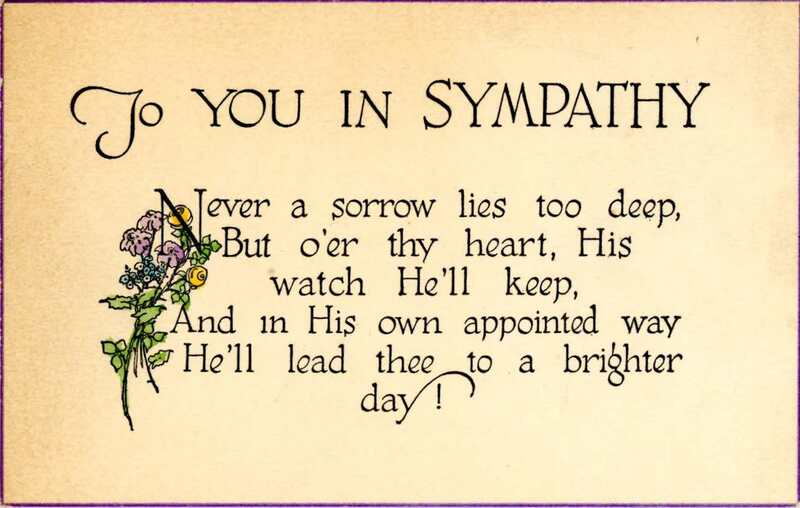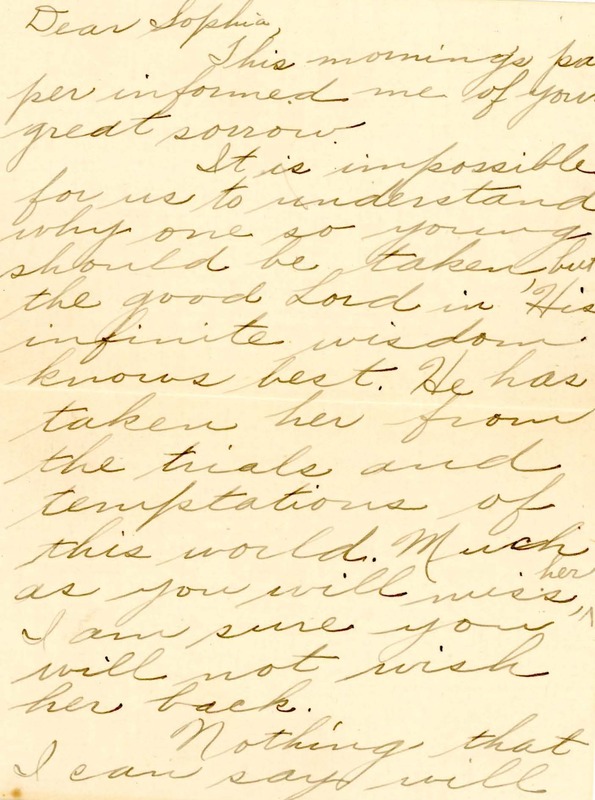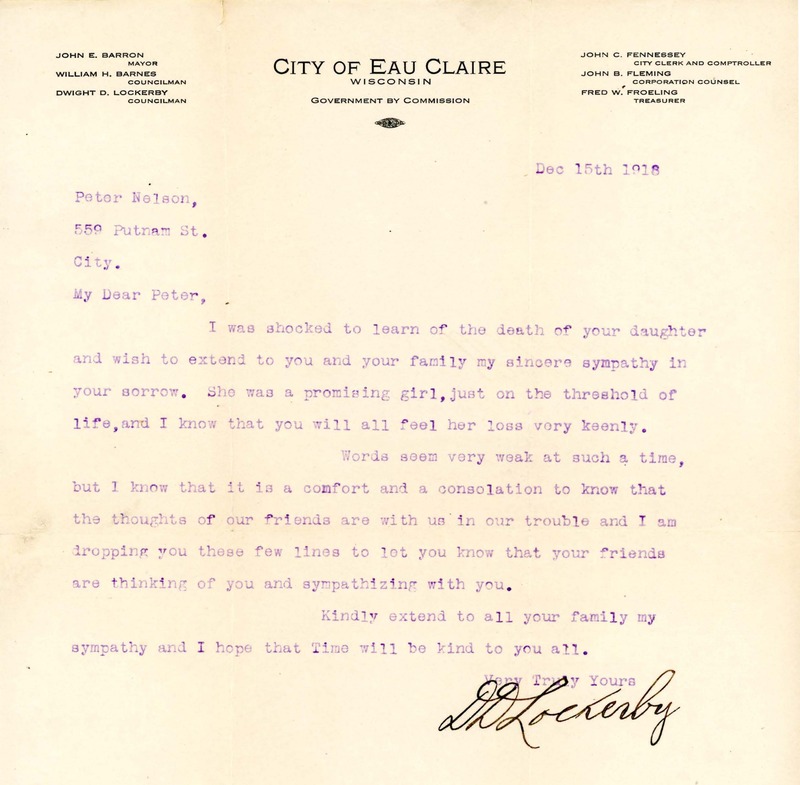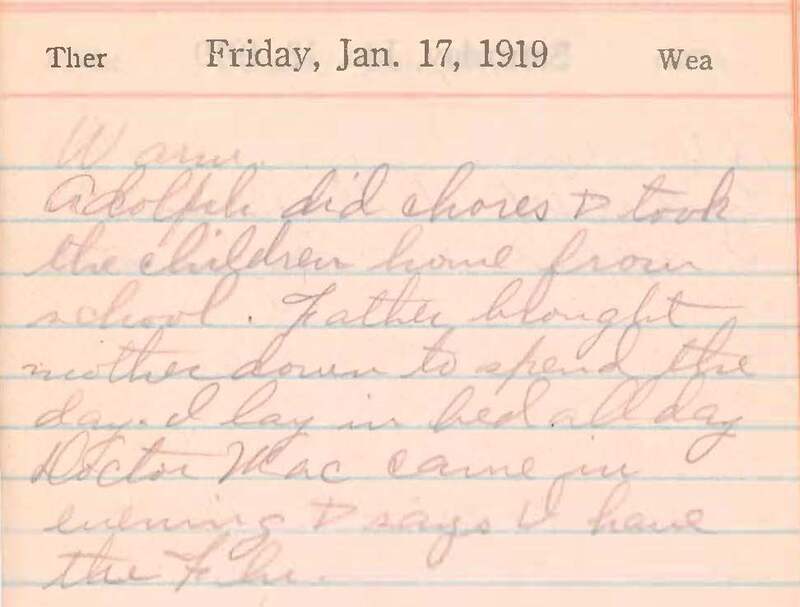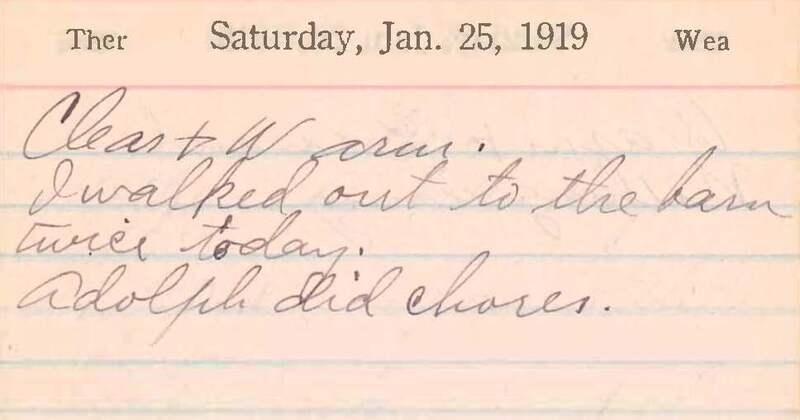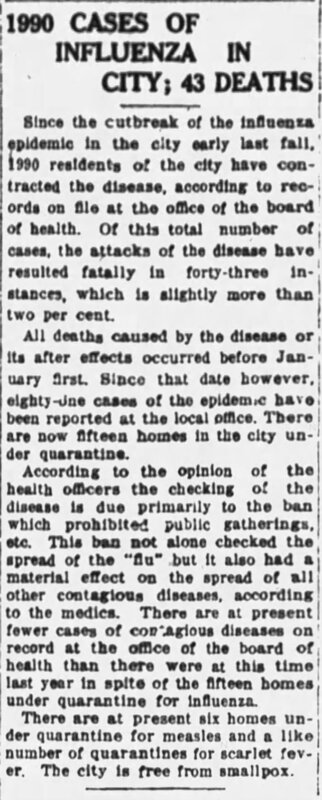Personal Stories
The 1918 influenza profoundly impacted each life in the Chippewa Valley. Daily routines were subject to change, and community institutions were forced to transform. Masks were worn and sanitization became routine to preserve the safety of people in the Chippewa Valley. Regulations were issued to the public of Eau Claire by the Board of Health, with noncompliance punishable by fine and imprisonment. Public gathering places from church to pool halls were forbidden to “stamp out” influenza. Loss swept throughout the area. The effects of the 1918 influenza did not discriminate, and were felt by all. Responsibility for containing the spread of influenza fell to citizens. People lived by new rules and adjusted their lifestyles, hoping for a return to normalcy.
Tragic loss was common at the time as many young people were dying. One local high school student Mildred Nelson died of influenza in the winter of 1918. Her death echoed throughout the Chippewa Valley, as letters of condolence filled the pages of a 1918 scrapbook dedicated to her memory. In a letter from Katherine Cosgrove to the departed Mildred’s sister, she wrote, “Nothing that I can say will lessen your grief, but I want not only to express my heartfelt sympathy for you and the family, especially your mother, but to offer my assistance.” The death of Nelson exemplifies the caring and collaborative community that existed in the area. Another loved one wrote in a letter included in the scrapbook, “...what a vacant space it must be without dear Mildred. Do believe the lord thought Mildred too good, willing, and faithful to be here on Earth.” The beloved girl was the subject of many kind words to the family. “She was a promising girl, just on the threshold of life, and I know that you will feel her loss very keenly,”, crooned a loved one.The letter from D.D. Lockerby and others show the extent of the sorrow brought by the loss of a young life to illness. Losses like that of Mildred Nelson were characteristic of the “Spanish Flu”, lethal to the unequipped immune systems of the young. As much as grippe kept the community at a distance, it also brought people together. A joint effort to dry tears, heal the sick, and prevent further infection kept the community going.
People who experienced a range of symptoms, illness durations, and after-effects had no choice but to push through the unsure times of outbreak. Trempealeau farmers Ralph and James Wood recalled their experience with the pandemic in journals. The journals detail daily updates during the influenza outbreaks of 1918 and 1919. Doctor’s visits, funeral attendance, and “LaGrippe” are mentioned throughout the journals, as well as a day-by-day account of Ralph’s personal experience being infected with influenza, and his lagging recovery. Ralph’s diagnosis of influenza came on January 17th of 1919, having undergone stages of illness and fluctuating strength, until his return to normal activities on the 27th.The corresponding journals show the family’s collaboration, during Ralph’s bout with influenza. Ralph’s obliging brother James took on his chores and cared for the family in his absence. The 1918 influenza pandemic drove a physical wedge between people, yet it fostered a necessary cooperation that carried the community to the other side of the tumultuous period.


